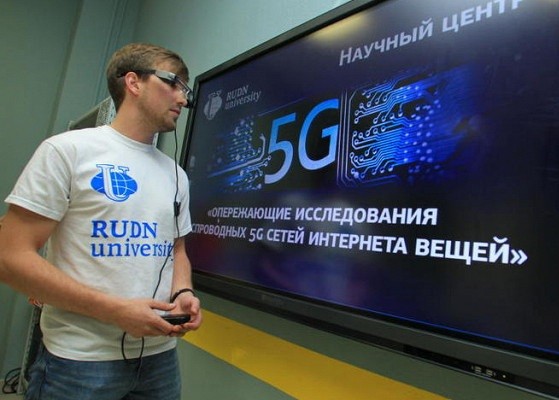RUDN scientists will develop an algorithm that allows telecom operators to share 5G networks
 “Providers will be able not only to“ virtualize ”the power of 5G networks, conditionally translating megahertz in which the frequency band is measured into user-friendly megabits of the Internet, but also to“ cut ”the radio network into segments to transmit them to virtual operators. At the same time, optimizing the use of 5G networks it will be that virtual operators will compete with each other in terms of the efficient use of these radio resources.
“Providers will be able not only to“ virtualize ”the power of 5G networks, conditionally translating megahertz in which the frequency band is measured into user-friendly megabits of the Internet, but also to“ cut ”the radio network into segments to transmit them to virtual operators. At the same time, optimizing the use of 5G networks it will be that virtual operators will compete with each other in terms of the efficient use of these radio resources.
We are developing optimization models and algorithms that can be taken as the basis of Russian standards for participants in new markets for mobile services, "- Director of the Institute of Applied Mathematics and Telecommunications of RUDN University, Professor Konstantin Samuylov.
Matilda Pavlovna Mityaeva was born in 1925. In November 1942, she volunteered for frontline duty. She participated in the Great Patriotic War from November 1942 to June 1945 as part of the 53rd Infantry Division of the 475th Infantry Regiment. She was wounded twice.
The team led by Sergey Zyryanov, Head of the Department of General and Clinical Pharmacology, became the winner of the All-Russian competition of scientific projects "Technologies for Human Health".
RUDN University constantly adapts to the changes of the modern world and responds to challenges flexibly. This allows us to keep the standard of a world-class research university. The sphere of science is no exception. Peter Dokukin, Head of the Research Division, presented the updated R&D Programme at the meeting of the RUDN University Academic Council.
Matilda Pavlovna Mityaeva was born in 1925. In November 1942, she volunteered for frontline duty. She participated in the Great Patriotic War from November 1942 to June 1945 as part of the 53rd Infantry Division of the 475th Infantry Regiment. She was wounded twice.
The team led by Sergey Zyryanov, Head of the Department of General and Clinical Pharmacology, became the winner of the All-Russian competition of scientific projects "Technologies for Human Health".
RUDN University constantly adapts to the changes of the modern world and responds to challenges flexibly. This allows us to keep the standard of a world-class research university. The sphere of science is no exception. Peter Dokukin, Head of the Research Division, presented the updated R&D Programme at the meeting of the RUDN University Academic Council.